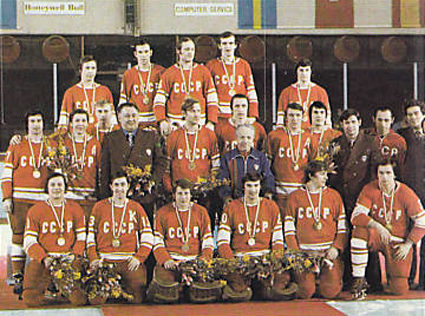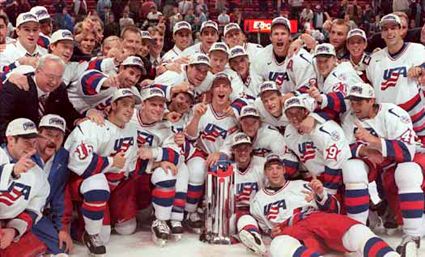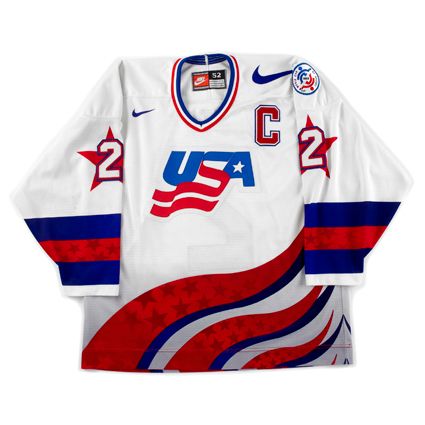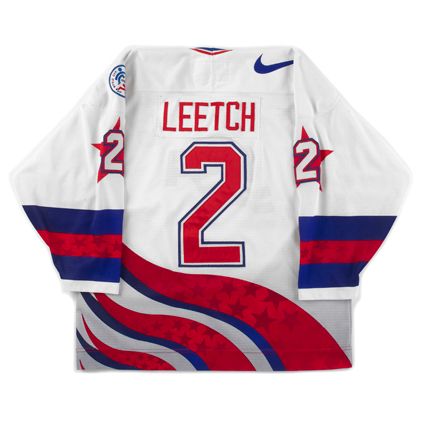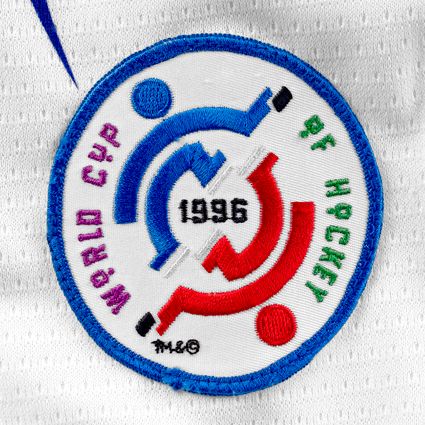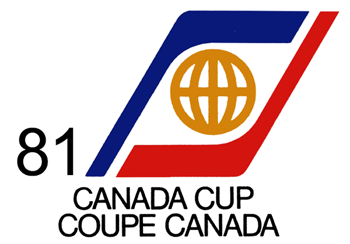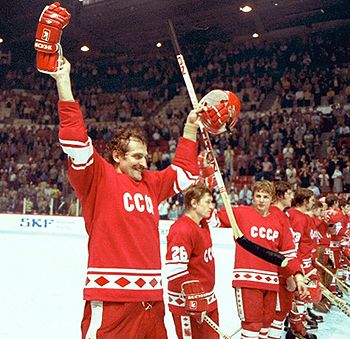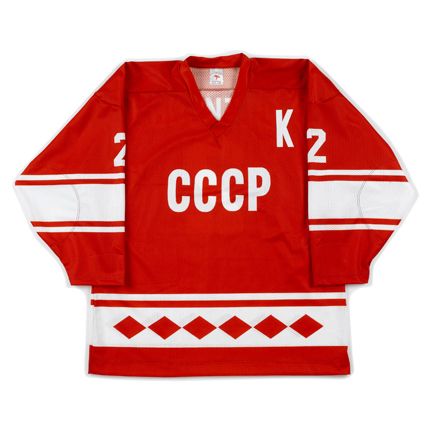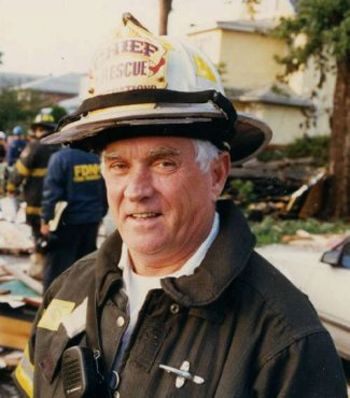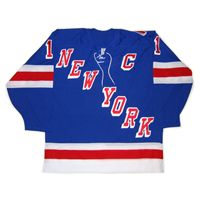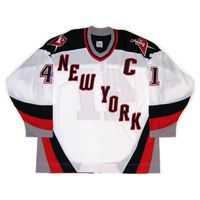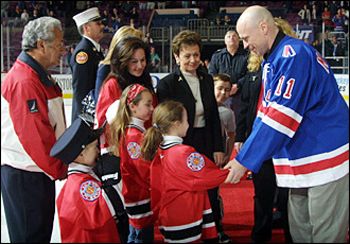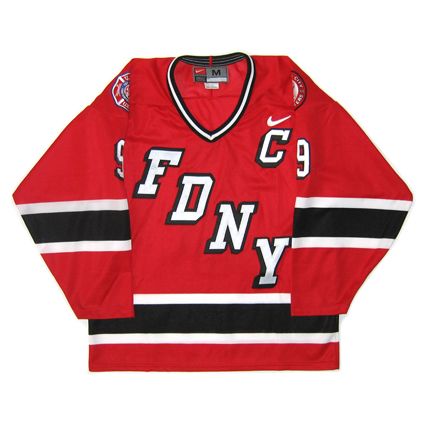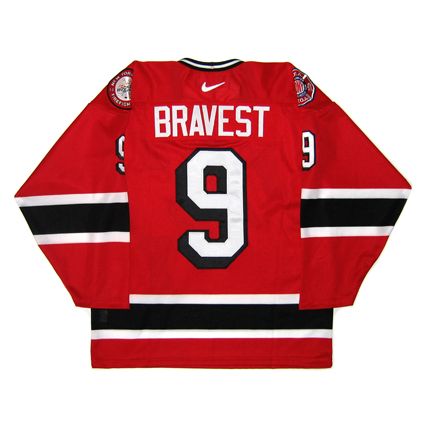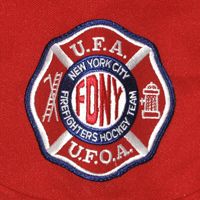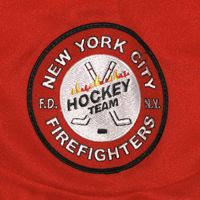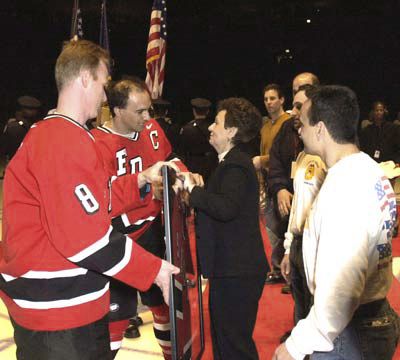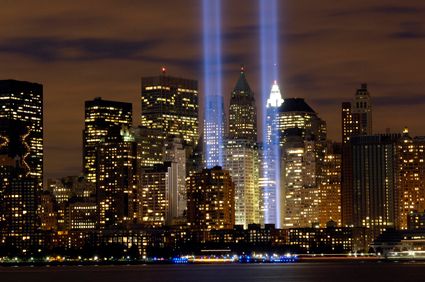The 1972 Summit Series concept of the best players each nation had to offer, regardless of amateur or professional stats, was expanded in 1976 with the creation of the first Canada Cup tournament, which saw teams from not only Canada and the Soviet Union, but the addition of teams representing Finland, Sweden, Czechoslovakia and the United States.
The United States saw mixed results in the Canada Cup tournaments, finishing 5th out of 6 in 1976. A 4th place in the round-robin portion in 1981 saw them qualify for the semi-finals, where they were easily defeated by the host Canadians by a 4-1 score.
A strong round-robin result had the USA finishing 2nd in 1984, including a 7-1 opening game defeat of Sweden, a 4-4 tie with Canada, a narrow 2-1 loss to the Soviet Union and a 6-4 win over West Germany for a 3-1-1 record. The United States would face off against Sweden in the semifinals and suffer a stunning 9-2 drubbing at the hands of the Swedes, who scored on their first four shots on goal, a team the USA had so easily defeated just 11 days earlier.
In the 1987 edition, the United States completed the round-robin portion of the tournament with a 2-3 record to finish 5th and fail to advance to the playoff round.
Things improved in 1991, with the Americans taking second in the round-robin portion with an impressive 4-1 record. They opened the tournament by defeating Sweden 6-3, then lost to Canada 6-3 before running off a series of victories against Czechoslovakia (4-2), the Soviet Union (2-1) and Finland (4-3). The semi-finals saw a confident US take care of Finland again by a 7-3 score and advance to the finals versus Canada, who would defeat the US by scores of 4-1 and 4-2 to win the best-of-three finals.

Tony Esposito playing goal for the United States in 1991
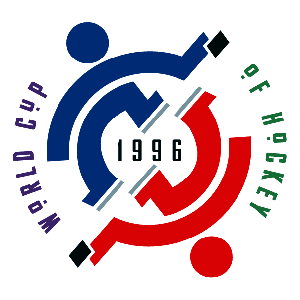
Taking a more global perspective, the competition now included eight teams, partially as a result of the political upheaval during the fall of communism in Eastern Europe. There were now also games held in Europe for the first time ever.
The teams involved in the North American Pool included Canada Cup hold-overs Canada, Russia (no longer the Soviet Union) and the United States plus newcomer Slovakia, which was formerly part of Czechoslovakia. The games were held in Vancouver, Montreal, Philadelphia, Ottawa and New York.
The European Pool saw Sweden and Finland joined by the Czech Republic (also formerly part of Czechoslovakia) and Germany, which had participated in the Canada Cup once as West Germany in 1984. Stockholm, Sweden, Helsinki, Finland, Prague in the Czech Republic and Garmisch, located in Germany, would all host games in Europe, with the top three teams advancing to the playoffs held in North America.
The North American Pool saw the United States come out on top with a 3-0 record and earn a bye directly into the semifinals, while Sweden won the European Pool for its trip to North America and a place in the semifinals.
In the quarterfinals Germany would fall to Canada 4-1 in Montreal and Russia would overpower Finland 5-0 in their game played in Ottawa.
The semifinals would see Canada take down Sweden 3-2 in two overtimes in a game held not in Canada, but Philadelphia! Canada held a 2-0 lead after two periods, only to see Sweden come back to tie the game in the third. Theo Fleury would score the game winner with just 13 seconds remaining in the second overtime to send Canada into the best-of-three finals.
Meanwhile, the United States would oddly have to travel to Ottawa to defeat Russia 5-2. Just 26 seconds into the game, Pat Lafontaine would put the Americans ahead and Brett Hull then scored on the powerplay to give the US a 2-0 lead just before the end of the opening period. The United States would extend its lead by scoring a pair of goals in the second, after giving up one to the Russians, to take a commanding 4-1 lead into the third. Sergei Zubov would pull one back for Russia less than two minutes into the third, but the United States would counter that with a goal at 14 minutes to re-establish their three goal margin and advance to the finals versus Canada.
Game One of the finals was held in Philadelphia and was a close fought battle. Eric Lindros would put the Canadians up 1-0 after one period. Defenseman Derian Hatcher would score a pair of goals in the second to give the USA the lead, only to have Claude Lemieux tie the game during the final minutes of the second.
Fleury gave the Canadians the lead half way through the third. The lead held up through the remainder of the period until the USA pulled their goaltender Mike Richter. The resulting man advantage caused the Canadians to ice the puck repeatedly, and with less than 10 seconds remaining in the game, Joel Otto won the faceoff back to US captain Brian Leetch, who fired the puck at Canadian goaltender Curtis Joseph, who made the save only to have Eric Desjardins try to put the puck under his goalie Joseph and see it sneak through his legs and trickle over the goal line with 6.3 seconds showing on the clock.
Canada would dominate the resulting overtime, outshooting the US 6-1 before Steve Yzerman shot one past a screened Mike Richter to give Canada the first game in the best-of-three finals.
Game Two in Montreal would see the United States come out on top with a 5-2 win. The teams would trade goals in the first period, but the United States would add a pair in the second from John LeClair, his second of the game, followed by Brett Hull. Joe Sakic would cut the margin to one at 14:48 of the third, but the United States would put the game away with a pair of empty net goals in the last 1:08 of the contest, forcing a deciding Game Three, also to be held in Montreal.
With Richter, playing at the top of his game, holding off the Canadian attack, the United States scored the first goal at 11:18 of the first on the power play as Hull would give the US a 1-0 lead after one. The lead would hold up almost the entire second period as Richter would continue his stellar play in goal for the US, making 21 saves in the second period before Eric Lindros would even the score with just six seconds before the intermission. At this point, the Canadians had decisively outshot the Americans by a margin of 32-14.
Adam Foote would solve Richter at 12:50 of the third to give Canada their first lead in over 5 1/2 periods of hockey.
Hull would even the score when he deflected a high shot from the point by Brian Leetch that would stand after a video review, tying the contest at 16:42.
Energized by the goal, the Americans continued to press and Tony Amonte gave them the lead with 2:35 remaining.
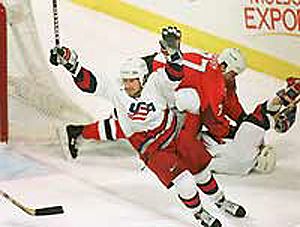
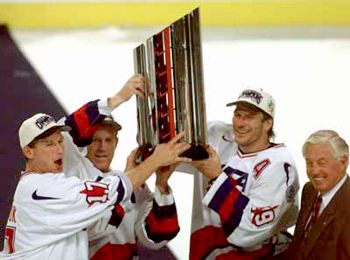
Hull would finish the tournament with 7 goals and 4 assists for 11 points in 7 games to lead the tournament in scoring followed closely by teammate John LeClair with 10 points from 6 goals and 4 assists. Doug Weight (7), Leetch (7) and Keith Tkachuk (6) would all finish in the top 10 in scoring for the Americans.
The tournament All-Star team would be made of of Forwards Mats Sundin (Sweden), Hull and LeClair of the USA, defensemen Calle Johansson of Sweden and Chris Chelios (USA) as well as goaltender Richter of the USA, who would also be named the tourament's Most Valuable Player thanks to finishing with a 5-1 record, with his only loss coming in overtime.
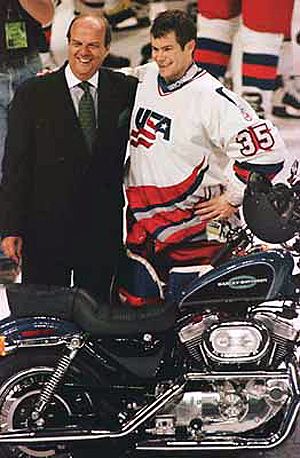
The jersey features the smaller 3" size World Cup of Hockey logo patch worn on the left shoulder by the Nike-clad teams in the tournament, which included not only the USA, but Russia, Slovakia, Finland and Germany.
The larger 4" size patch was worn by the teams that wore Bauer jerseys, which were the Czech Republic and Sweden, who also wore the patch on the left shoulder, and Canada, who wore the patch on their right chest.
This style of USA jersey features dye-sublimated "waving flag" stripes on the waist that contain subtle stars in the red areas, as well as in the red sleeve stripes. These jerseys are very sought after and command a lot of attention when they come up for sale.
As was Nike's practice at the time, jerseys sold customized with player names and numbers featured sewn twill crests and were tagged with numbered sizes, such as 48 & 52 (but no fight straps), while blank jerseys were sold as Large and Extra Large using sublimated crests.
The jerseys sold with player names from Nike were #35 Richter, #2 Leetch and #27 Jeremy Roenick, who never actually played in the World Cup due to being a free agent and not having health insurance at the time. None of the jerseys were sold with the World Cup patch and the Leetch jerseys did not come with the captain's "C". Those would need to be added separately by their owners for proper authenticity as we have done with today's featured jersey.
The blue road jerseys were not available for retail sale and can only be found as game worn or team issued jerseys, which are complete with fight straps.
First up is LeClair tying Game 1 with less than seven seconds to play.

